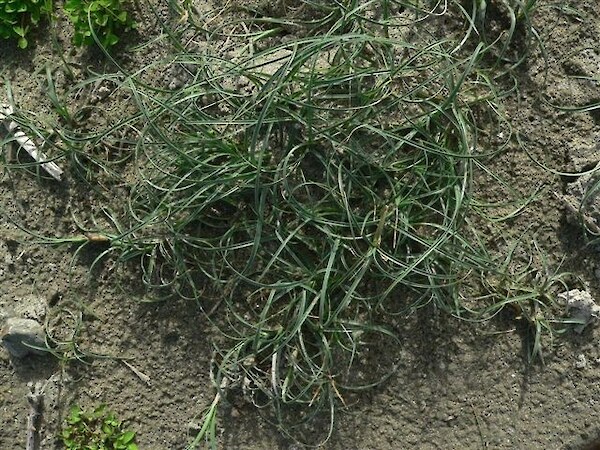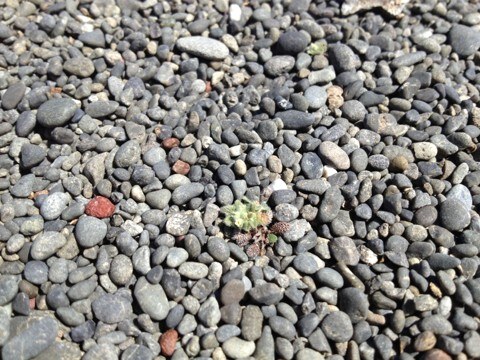The Coastal Restoration Trust Backdunes Project funded by the Ministry for the Environment’s Community Environment Fund (CEF) has finished as of 30 June 2014. This is the culmination of three very successful years of field work, collaboration with Coast Care groups and management agencies nationwide, and completion of numerous outputs.
The project has fulfilled its objectives to undertake an extensive review of existing knowledge and experience on backdune restoration, set up of demonstration areas and monitoring sites in many regions and also provide practical guidelines on practical methods for backdune restoration for coastal groups, iwi, managing agencies and the wider community.
The aim of the project was to produce and communicate guidelines that will empower communities to more successfully design and undertake restoration of backdune environments. As a result 12 additional Technical Handbook articles have been published (see below). A powerpoint presentation of summarising the sites and demonstration trials established during this project will be posted on the Coastal Restoration Trust website www.coastalrestorationtrust.org.nz
March-June 2014 site visits in brief
Over the last 4-month milestone period a number of sites were inspected with Project Partners.
Northland
Visits were made to Waipu Cove, Ruakaka Beach, Tauranga Beach, Taipa, Rarawa, Ahipara, Tokomaru Beach and Waikato Bay on the Karikari Penn. Reassessment of the beach transects to determine exotic wattle growth.
Auckland
Reassessment of the large Coprosma acerosa (Sand coprosma) planting trial at Te Henga Beach, West Auckland.
Whanganui
Visits to several beaches along the south western coast where done in mid March stopping at Foxton Beach, Himatangi Beach and Patea Beach.
Taranaki
Reassessment of the Living Legends planting on the backdunes at Te Rewarewa, New Plymouth. Other sites that were visited are Motu to the north and Opunake and Oakura to the south.
Wellington
Several sites were visited around Wellington and on the KapitiCoast – Petone, Whitireia Park, Te Horo Beach, Waitohu Beach, Paraparaumu Beach and on the far eastern side Onoke Spit.
Canterbury
Return visits to the Canterbury sites were completed at Te Kohaka o Tuhaitara Trust Park in North Canterbury and Caroline Bay and Otipua Beach at Timaru where significant restoration work is being undertaken and monitored.
Backdune articles for the Coastal Restoration Trust Technical Handbook
Twelve articles for the Coastal Restoration Trust Handbook have been published as part of the CEF Coastal Restoration Trust Backdunes Project. Areas covered include succession and zonation on backdunes, guidelines for restoration of backdunes, key native ground cover, shrub and tree species to plant on dunes, and a case study of backdune restoration underway by Coast Care groups in each of the North and South Islands.
New Articles:
The 12 new articles for the Coastal Restoration Trust Handbook add a total of 98 pages of new information to the handbook. These articles are distributed across several sections within the Handbook:
Section 2 – How do dunes work?
2.4 Zonation and Succession
“In simple terms, zonation is a sequence of vegetation in space, while succession is a sequence in time… A key feature of dune vegetation is the sequence of different vegetation communities or zones that occur with increasing distance landward…”
Section 8 – Native vegetation on backdunes
8.1 Backdunes – an introduction
“Backdunes range from low dunes a metre or so in height on some coasts in areas of limited sediments supply, to over 30m in height in some instances. On most sites, backdunes are relativity stable and are likely to have a cover of vegetation but in some circumstances they can be highly unstable and poorly vegetated.”
8.2 Ground Cover Plants for restoration of backdunes
“A range of native ground cover plants dominate the zone between the sand and tree zones landward. The ground cover zone, as with other zones, has been heavily modified since human occupation. These impacts including grazing, pest animals, exotic plants and development.”
8.3 Native Trees and Shrubs to use on backdunes
“The landward zone of most of New Zealand’s coastal sand dunes was once covered in a diverse range of coastal native shrub and tree species. The coastal forest and shrubland zone was part of the sequence of coastal vegetation zones from foredunes to backdunes to lowland forest…”
8.4 Wiwi – Knobbly Club Rush, the wonder plant of backdunes
“Wiwi or knobbly club-rush (Ficinia nodosa) is a rhizomatous perennial rush… The species is not threatened. …It readily established on backdune sites as natural regeneration and has been planted by Coast Care groups in many regions throughout New Zealand.”
Section 10 – Human impacts on dunes on New Zealand coastal dune systems
10.1 Human Modification
“Dune management and restoration is primarily required because of the significant modification of dune ecosystems that has occurred since human settlement in New Zealand. Coastal dunes are probably the most modified and degraded of all New Zealand’s major ecosystems…”
Section 12 – Planting practices for coastal dunes
12.1 Planting Natives on Sand Dunes – getting started
“Planting of native coastal dune species is likely to be a major component of most sand dune restoration programmes… Most Coast Care groups have experienced poor survival of planted natives on sand dunes. Many factors contribute to failure of restoration programmes…”
Section 13 – Weeds and pests animals on coasts
13.3 Weed Control
“Poor or inadequate weed control adversely affects plant survival, vigour and growth of planted natives. Weed control, often referred to as ‘releasing’, is essential with any planting project using natives.”
Section 14 – Monitoring for coastal sand dunes
14.1 Monitoring Coastal Sand Dunes, an introduction
“Most monitoring of dune condition and vegetation cover undertaken by community Coast Care groups is based on non-quantitative observations by members… Assessing the state of the beach and dune system and monitoring changes over time are essential requirement s for any dune restoration programme.”
Case Studies
Case Study 1 Restoring Degraded Urban Dunes Case Study – Eastern Coromandel
On the Coromandel in the Waikato region restoration involves “a ‘whole of dune’ approach where the dense weed cover of both foredune and backdune are mechanically removed to allow planting of appropriate native plant species within each zone.”
Case Study 2 Establishing Natives on Sand Dunes Case Study – Caroline Bay, Timaru
“Over the past decade the Timaru District Council has undertaken a major development of the coastal zone including restoration of backdunes along Caroline Bay in Timaru, South Canterbury.”
Copies of each of these articles are now available as pdfs on the Coastal Restoration Trust website.
Thank you!
Finally a big thank you to all of our Project Partners who have been involved with the Backdunes Project over the last three years – the community and the Coast Care groups, the local, district and regional councils, other trusts and the Department of Conservation. We greatly appreciate your time and contribution to sharing issues and experiences of backdune restoration in your areas.
Coastal Restoration Trust newsletters current and past can be found on the Coastal Restoration Trust website.


